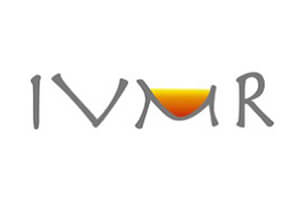
The goal of the project is an analysis of the applicability and technical feasibility of the IVMR strategy to high power reactors, both for existing ones (e.g. VVER 1000 type 320 units) as well as for future reactors of different types (PWR or BWR). The main outcomes of the project will be elevant assumptions and scenarios to estimate the maximum heat load on the vessel wall, improved numerical tools for the analysis of IVMR issues and a harmonized methodology on the IVMR.
The stabilization of molten corium is recognised as essential if a safe and stable state is to be reached following a severe accident. Among the possible options, In-Vessel Melt Retention (IVMR) appears as an attractive solution that would minimize the risks of containment failure (less Hydrogen produced, no corium-concrete interaction), if it can be proved to be feasible.
The strategy is already adopted for the VVER 440 type 213 based on thorough research work for the Finnish Loviisa NPP and Hungarian Paks NPP. It is also included in the design of some new Gen.III reactors like AP-1000, APR 1400 and Chinese CPR-1000. It has also been studied in the past for other reactor concepts like KERENA (BWR) or VVER-640.
Current approaches for reactors with relatively small power, such as VVER 440 or AP600, use conservative assumptions. However, for higher power reactors (around 1000 MWe), it is necessary to evaluate the IVMR strategy with best-estimate methods in order to address the uncertainties associated with the involved phenomena. Additional R&D is needed to ensure and demonstrate adequate safety margins, including identification of efficient technical solutions for the external cooling of the vessel and performing best-estimate evaluation of relevant scenarios. Among other provisions, the possibility of cooling the corium inside the vessel by direct injection of water into the degraded core, may be considered because it is likely to remove a significant part of the residual power.
LEI activities in the Project
In 2016, LEI specialists applying RELAP/SCDAPSIM Mod3.4 package developed a numerical model of the second generation boiling water reactor BWR-5 to simulate thermal-hydraulic processes.
The accident due to large leak from the reactor cooling circuit and loss of power supply at the same time was modelled. As the consequence of such accident the core melt and the collapse of melt into the lower part of the reactor vessel is expected. The collapsed melt may heat up the lower part of reactor vessel. In this case was simulated the flooding of lower structural part of the vessel from outside by water and the possibility to cooldown the reactor vessel, protecting it from damage, was evaluated. In this way, the impact of IVMR strategy will be assessed.

Total cost: 8 205 085 EUR (LEI part: 28 500 EUR)
Coordinator: INSTITUT DE RADIOPROTECTION ET DE SURETE NUCLEAIRE, France
Participants:
- UJV REZ, a.s., Czech Republic
- JRC -JOINT RESEARCH CENTRE- EUROPEAN COMMISSION, Belgium
- COMMISSARIAT A L ENERGIE ATOMIQUE ET AUX ENERGIES ALTERNATIVES, France
- KUNGLIGA TEKNISKA HOEGSKOLAN, Sweden
- KARLSRUHER INSTITUT FUER TECHNOLOGIE, Germany
- AREVA NP SAS, France
- ELECTRICITE DE FRANCE S.A., France
- GESELLSCHAFT FUER ANLAGEN- UND REAKTORSICHERHEIT (GRS) MBH, Germany
- HELMHOLTZ-ZENTRUM DRESDEN-ROSSENDORF EV, Germany
- FORTUM POWER AND HEAT OY, Finland
- TEKNOLOGIAN TUTKIMUSKESKUS VTT OY, Finland
- MAGYAR TUDOMANYOS AKADEMIA ENERGIATUDOMANYI KUTATOKOZPONT, Hungary
- NUBIKI NUCLEAR SAFETY RESEARCH INSTITUTE LTD., Hungary
- INZINIERSKA VYPOCTOVA SPOLOCNOST TRNAVA S.R.O., Slovakia
- AGENZIA NAZIONALE PER LE NUOVE TECNOLOGIE,L’ENERGIA E LO SVILUPPO ECONOMICO SOSTENIBILE, Italy
- LIETUVOS ENERGETIKOS INSTITUTAS, Lithuania
- TRACTEBEL ENGINEERING S.A., Belgium
- IMPERIAL COLLEGE OF SCIENCE TECHNOLOGY AND MEDICINE, United Kingdom
- NUCLEAR RESEARCH AND CONSULTANCY GROUP, Netherlands
- INSTITUTE OF NUCLEAR RESEARCH AND NUCLEAR ENERGY – BULGARIAN ACADEMY OF SCIENCES, Bulgaria
- CENTRUM VYZKUMU REZ S.R.O., Czech Republic
- NARODOWE CENTRUM BADAN JADROWYCH, Poland
Project Team
| Name, surname | Office | phone. | |
|---|---|---|---|
|
LEI Representative |
|||
| Algirdas Kaliatka | 223-AK | +37037401903 | Algirdas.Kaliatka@lei.lt |
|
Project Team |
|||
| Eugenijus Ušpuras | |||
| Egidijus Urbonavičius | 443-AK | +37037401914 | Egidijus.Urbonavicius@lei.lt |
| Virginijus Vileiniškis | 251-AK | +37037401928 | Virginijus.Vileiniskis@lei.lt |
| Mindaugas Vaišnoras | 414-AK | +37037401954 | Mindaugas.Vaisnoras@lei.lt |
| Gintautas Dundulis | 434-AK | +37037401918 | Gintautas.Dundulis@lei.lt |
| Mindaugas Valinčius | 255-AK | +37037401922 | Mindaugas.Valincius@lei.lt |
| Tadas Kaliatka | 415-AK | +37037401911 | Tadas.Kaliatka@lei.lt |
| Tomas Kačegavičius | 250-AK | +37037401836 | Tomas.Kacegavicius@lei.lt |





